IMDEA Networks

Event Category: External Presentation (External Speaker)
Load Balancing is Not Optimal in Wireless Systems With Dynamic Interference
We study the impact of policies to associate users with base stations/access points on flow-level performance in interference limited wireless networks.
Most research in this area has used static interference models (i.e., neighboring base stations are always active) and resorted to intuitive objectives such as load balancing. In this paper, we show that this can be counter productive, and that asymmetries in load can lead to significantly better performance in the presence of dynamic interference which couples the transmission rates experienced by users at various base stations. We propose a methodology that can be used to optimize the performance of a class of coupled systems, and apply it to study the user association problem. We show that by properly inducing load asymmetries, substantial performance gains can be achieved relative to a load balancing policy (e.g., 15 times reduction in mean delay). We present a novel measurement based, interference-aware association policy that infers the degree of interference induced coupling and adapts to it.
ClubADSL
"ADSL is becoming the standard form of residential and small-business broadband access to the Internet due, primarily, to its low deployment cost. These ADSL residential lines are often deployed with Access Points (AP) that provide wireless connectivity. While the ADSL technology has showed evident limits in terms of capacity, the short-range wireless communication can guarantee a similar or higher capacity. Even more important, it is often possible for a residential wireless client to be in range of several other APs belonging to nearby neighbors with ADSL connections. We introduce ClubADSL, a prototype wireless station that can connect to several multi-frequency APs in range and aggregate their available ADSL bandwidth. ClubADSL achieves a fair bandwidth among the concurrent stations and minimizes the impact of end-to-end latency on the system performance. We show the feasibility of such a system in seamlessly transmitting TCP traffic, and validate its experimental implementation over commodity hardware in controlled scenarios."
Read more arrow_right_altBetting on Challenges for Flourishing Ambient Intelligence
This talk will present a brief overview of systems, technologies and applications that are part of Ambient Intelligence (AmI). It is also the purpose of this talk to bring together researchers for inspiring innovation in the evolution of AmI and for answering the question: What are the challenges we need to bet on?
Read more arrow_right_altWireless Mesh Networks: QuRiNet Testbed and Related Research
Wireless mesh networks are becoming popular alternatives to wireless LANs and for cost-effective use in varied application environments. There are several technical challenges that must be addressed for mesh networking to be as effective as any other form of broadband networking. Much of these challenges relate to multi-hop wireless communication and limited capacity. The goal of this informal presentation is to facilitate further discussions on these challenges.
Read more arrow_right_altMonitoring and Managing the Quality of Service in Structured Peer-to-Peer Systems
The peer-to-peer paradigm shows the potential to provide the same functionality like client/server based systems, but with much lower costs.
One substantial limitation of p2p systems are missing guarantees on the quality of service, as the whole infrastructure is based on unreliable peers. In order to control the quality of peer-to-peer systems, monitoring and management mechanisms need to be applied. Both tasks are challenging in large-scale networks with autonomous, unreliable nodes.
Read more arrow_right_altRouting for Energy Minimization in the Speed Scaling Model
The problem is interesting for two reasons. First, the cost function closely models the energy consumption of some network elements and network-wide optimization is a well-motivated but under-explored direction for energy minimization. Second, it brings light to a challenging combinatorial optimization problem. We will present positive and negative results for polynomial functions and polynomial functions with startup cost. For the latter, techniques to accomplish better-than-polynomial approximation ratios independent of demands and cost function remains a challenging problem.
Read more arrow_right_altEnergy Efficient Ethernet (IEEE 802.3az): Performance Evaluation
Energy consumption in Computer Networks is an issue that is gaining increasing attention. In this talk we will review the issue of energy consumption in Computer Networks to then focus on Ethernet where a new standard is being developed to improve energy efficiency. We will discuss some of the alternatives that were considered during the Energy Efficient Ethernet standardization process and describe the solution adopted in the standard. Then we will present some results of an initial performance evaluation of the standard that shows the potential savings for different scenarios. We will conclude the talk by outlining the implications that Energy Efficient Ethernet will have on different aspects of the LANs.
Read more arrow_right_altSecurity and non-cooperative behavior in wireless networks
According to most technology pundits, progress in wireless and sensor networks will lead us into a world of ubiquitous computing, in which myriads of tiny, untethered sensors and actuators will communicate with each other. Information technology will thus deliver its most encompassing and pervasive accomplishment to mankind, promptly taking care of the needs and wishes of everyone.
Read more arrow_right_altInformation and Communications Technologies and the challenge of energy efficiency
The steadily raising energy costs and the increasing number of evidences of climate changes induced by high levels of CO2 in the atmosphere have brought the issue of a sustainable use of energy to the attention of governments and of people all over the world. The need for a more responsible use of energy has emerged in all sectors, together with the awareness that a decrease in carbon emissions is vital to ensuring a future to mankind. The ICT sector, which has brought deep transformations and a rapid increase in productivity in many domains in the last decades, is at the center of this transformation. In all fields of communications, researchers have started to investigate approaches to reduce energy consumption, both by designing new devices, and by exploring new network architectures. In particula r, dynamic network planning, which implies decreasing the power consumption of those network resources which are underutilized, is seen as one of the most promising techniques to improve the energy efficiency of networks.
Read more arrow_right_altBinary Program Analysis and Model Extraction for Security Applications
In this talk I present a platform to extract models of security-relevant functionality from program binaries, enabling multiple security applications such as active botnet infiltration, finding deviations between implementations of the same functionality, vulnerability signature generation, and finding content-sniffing cross-site scripting (XSS) attacks.
In this talk, I present two applications: active botnet infiltration and finding content-sniffing XSS attacks.


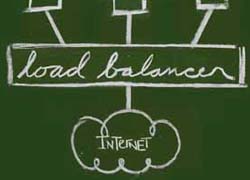

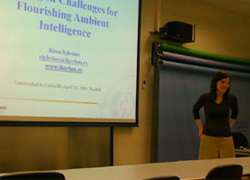


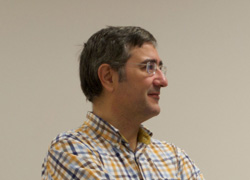
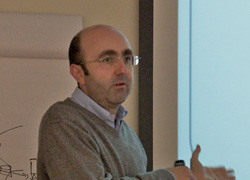

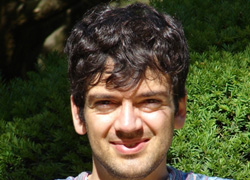

Recent Comments